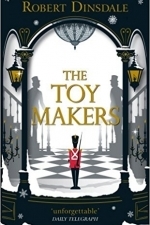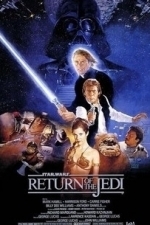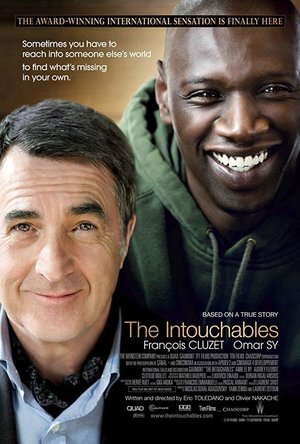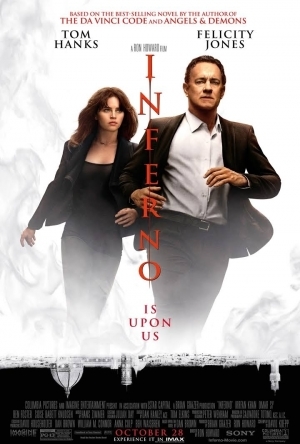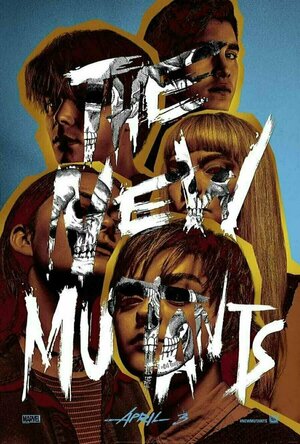Ian Broudie recommended track Psycho Killer by Talking Heads in Stop Making Sense by Talking Heads in Music (curated)

Air Microphone
Productivity and Utilities
App
Turn your iPhone into a microphone for presentations, speeches and more! ▶ More than just an...

Emirates NBD
Finance
App
Bringing you the future of mobile banking! Introducing Emirates NBD’s new mobile banking...

The Survivor: Rusty Forest
Games and Entertainment
App
Welcome to the world of "The Survivor", hit by unknown virus which has wiped out most of the world's...
Naomi Forrest (42 KP) rated The Toy Makers in Books
Jan 2, 2019
‘See the woman with the cage of pipe-cleaner birds, the vagrant soldier marvelling at the stuffed dogs lounging in their baskets? Keep a careful eye on them; you will see them again’.
I knew just from this descriptive ‘setting the scene’ chapter this book was going to be amazing, there was so much magic encapsulated in those first five pages. Papa Jack’s Emporium is the most wonderful shop you could imagine, a labyrinth of joy, surprises around every aisle and so much more. If you have ever seen the toy shop on Home Alone 2 that looked so amazing as a child, it has nothing on this! I was pretty sure for at least half of the book that Papa Jack was indeed Father Christmas.
After the initial chapter, the reader is introduced to Cathy, a fifteen year old who, shamefully (the year is 1906), is unmarried and pregnant. Plans are made for her to go to a special home where she will give birth and her child will be adopted. However, Cathy spots an advert looking for staff for the Emporium and runs away and so, the magic begins! The reader is catapulted into the world of the emporium and soon meets Papa Jack’s sons, Emil and Kaspar, who assist their father in the running of the store and the making of the toys, which are so much more than toys as we know them. People flock from far and wide to the emporium for it’s sublime creations and the memories and pleasures that they evoke.
The first half of the novel was like a fairytale, building beautifully to a gorgeous climax, full of wonder, friendship and subtle romance (perfectly done, so as not to detract from more pressing themes). In my head, toy soldiers and paper trees were everywhere and the wendy house is the stuff that dreams are made of. I loved observing (as I stood in the corner of the emporium, I’m sure, so convincing is Dinsdale) the relationships the built between Cathy and Emil and Cathy and Kaspar, though at times I felt sorry for Emil, never quite catching up to Kaspar as he wishes. If only the story had ended at page 187. And yet, that would not have been satisfying, not enough, so really, I’m glad it didn’t.
The second part of the novel, that is where Dinsdale really takes us on a journey. A couple of darker themes are touched upon in part one, where we learn of Jekab’s history (Papa Jack) but it ramps up in the second part, which ties in with World War I and beyond. You would think going from such wonderment and happiness to a bleak world of misery and reality would make you want to stop reading but I could not put this book down. I read 3/4 of it in one go! It is in the second part that Dinsdale brings in themes of shell shock, betrayal, sibling jealousy, bitterness and true, deep, familial love. Without spoilers, some characters truly lose everything and I cried during and after the book as it moved me so greatly (I mean, I am a crier anyway but not usually with books!). The entire novel is shaped around the ‘war’ between the brothers with some shocking twists along the way. Though part two draws in more realities, more brutalities and some heartbreaking moments, magic still punctuates and carries the reader through to the end. The ending is bitter sweet and my emotions were cloudy here, anger, joy, sadness and warmth all merging into a big teary mess.
I won’t say too much about specifics because some kinds of magic need to be discovered for yourself. The most beautiful sentiment in this novel though is that toys can’t save a life but they can save a soul, because toys transport many of us back to times of happiness, of wonder and of innocence, when things were simpler and problems remedied more easily. Times change but the joy of toys doesn’t. I can recall going through toy exhibits at both the castle museum in York and a toy museum in Edinburgh and it was so thrilling not only to see toys from my childhood but toys from before. Toys have the power to make magic we never knew existed, even if it is only in our head. The Toy Makers has yielded many comparisons with Erin Morgensten’s The Night Circus but for me, this novel surpassed anything I have read before in a similar vein. I have truly been blown away into a world that I honestly believe I will carry with me forever more. If, like me, you are a Harry Potter fan, you will know what I mean when I say that this book matches up to that first trip to Diagon Alley, to Hogwarts and to Honeydukes or that journey up Enid Blyton’s faraway tree as a child but it is even more exciting as an adult. It isn’t only the description that is first rate though; Dinsdale’s narrative style and use of language pulls you in and flows so smoothly, you are carried away from the first page whether you are prepared for it or not. Some reviews have said it is too fantastical but I cannot rate this book highly enough. It isn’t always easy reading – prepare to have your heart broken in several places- but go in looking for magic. You won’t be disappointed!
RəX Regent (349 KP) rated Star Wars: Episode VI – Return of the Jedi (1983) in Movies
Mar 7, 2019
The first film had pioneered the technology and concepts of which to present and achieve such a franchise in the 1970′s and '80′s, and "The Empire Strikes Back" is still the benchmark for part twos, but where this film falls down is that it has sacrificed narrative quality for Lucas' realisation that he could finally do what he wanted, without any hindrance from studios or production limitations.
He had the best of best in visual effects with his Industrial Light and Magic, and he had a vision which had remained unrealised in the previous two films, such as the so called failed Cantina scene in "Star Wars", which is presented here, only this time in the walls of Jabba's palace.
The first half I believe, is George Lucas' real film. Monsters and Muppets, pure fantasy as our heroes wrap up the events of the previous film, and make their daring escape from Jabba the Hutt. The second part is almost a separate film, focusing quite rightly on the Empire and the destruction of the second Death Star. But this plot is very matter of fact, and has no real charm or heart, just epic visuals and a theatrical sense.
Meanwhile, Han Solo and Princess Leia are leading a rebel assault on the forest moon of Endor, populated by the most annoying Muppets of all the dreaded Ewoks! The Ewoks must be one of cinema's greatest misjudgments, the first real misstep in Lucas' handling of the "Star Wars Saga"; but with the prequels and the constant tinkering with the originals, this was to be the thin end of the wedge.
Don't get me wrong, there are plot elements revolving around the Muppets which I liked, such as the nature vs. technology metaphor, but that doesn't excuse the Ewoks and nothing ever will! But elements such as the Speedbike chase and the final battle, all of it, the final Vader/Luke dual, the assault of the Death Star itself, and even the ludicrous Ewok assault, are excellent, visually stunning and exiting and it is enough to save this film from being bogged down by the bad.
And like I said, the money grabbing, almost narratively illiterate George Lucas has damaged and defamed his franchise with his constant tinkering, firstly with the Special Edition in 1997, and then with his Enhanced Special Edition in 2004 for the DVD release.
Lucas is a visionary and has done so much for the film industry and we should be grateful but in the end, he needs to stop milking this franchise, stop pretending that it is never finished, when he has finished it THREE times now and realise that the best of the original trilogy was directed and written by other people, all of which display more talent. Lucas is not a good director but he is a good producer and he has brought this franchise to the screen and the movie industry is better for it. But the Special Editions bring nothing important to the mix, with the exception of the finale, which does carry more scope that 1983 original.
Overall, the weakest of the "Star Wars Trilogy" is a fair assessment and at its worst, it's still leagues above any entry in the prequels, even the Episode III, which is the closest to this high standards of this series.
Darren (1599 KP) rated Untouchable (2011) in Movies
Jun 21, 2019
The two men are from different backgrounds and have lived different lives, together they teach other about life, with Philippe becoming a father figure to Driss and Driss showing Philippe that his condition doesn’t need to stop having the adventures he loved just because of his condition.
Thoughts on Untouchable
Characters – Philippe is the quadriplegic that needs to hire a caregiver to help him in everyday life, he picks Driss because he is the only one that treats him like normal person. He has always been involved in extreme sports which is where his accident happened, his money will keep him away from any problems he might face, now he must learn to carry on with his own life. Driss is from the projects in Paris, he gets hired giving him a chance at a different life, his ways are different to a normal carer, but this helps him learn how to get more out of his life and get out of the troubles he has been facing in his own life. Yvonne is the personal assistant to Philippe who fills in he blanks for Driss when he is learning the job. Magalie is handles business affairs for Philippe and catches the eye of Driss, she doesn’t fall for his charm like he believes most women would.
Performances – Francois Cluzet is wonderful in one of the leading role, he must show so much through his facial expression which he makes us love each scene and moment he gives us. Omar Sy is fantastic too, he has such great chemistry with Francois and brings the energy required for this role. The supporting cast are all good though they don’t get as much screen time as the lead pair.
Story – The story shows the bond between Philippe and Driss, two men that are from different backgrounds who spend time together when Driss gets hired as a carer for Philippe, we get to see how they both learn life lesson which make them grow as men. The fact we see the man with the lest experience being the best person for the disabled man shows us that life skills are just as if not more important than any training. We do go through the teaching about new cultures between the two and we get to see how both deal with their own serious problems from life. The tone of the storytelling shows us how you can have serious mixed with comedy and still get the point across which is what makes this film such an essential viewing.
Biopic/Comedy – This film uses the biopic side of the film to show the friendship created between the two men, which does change a couple of things to suit the actors. The comedy comes from just how Driss treats life with his carefree attitude which brings all the light-hearted positive vibes to the film.
Settings – The film is set in Paris and uses the settings to show us the two different lifestyles the men have come from, we do get other trips which show us just how far they could go together.
Scene of the Movie – Paragliding scene.
That Moment That Annoyed Me – Not understand the time lapse.
Final Thoughts – This is one of the most beautiful movies you will see, we get to see a connection unlike anything you could imagine between two completely different people and it will leave you with a smile due to all the positivity through the film.
Overall: Essential watching.
https://moviesreview101.com/2019/06/21/abc-film-challenge-world-cinema-u-untouchable-2011/
Gareth von Kallenbach (980 KP) rated Inferno (2016) in Movies
Jul 15, 2019
Tom Hanks has reprised his role as Robert Langdon (this time with an appropriate haircut) and once again he travels around to beautiful locations of European art and architecture with a young woman by his side, trying to solve a series of clues in order to stop a billionaire madman who believes humanity is a parasite and his plague inferno is the cure. If this sounds like a film you have seen before, it is because you have. In the other two movies that have come before it
Once again, audiences will enjoy being whisked around to see beautiful cities, art, and architecture to solve historical literary clues as the film plays out like a late middle ages travel lesson. These are all good things.
The bad is that during the first half of the film, Robert Langdon has amnesia due to a blow to the head. He cannot remember much which of what he was doing, which makes him a less compelling character. Throughout the series of films, Langdon has used his “dizzying intellect” to solve clues the brightest minds could not solve. In Inferno, that “super power” is taken away and we are left with an average, middle aged man, who is somehow able to solve impossible puzzles and clues while being chased by seedy underground characters and the world health organization. Who for the purposes of this film, seem to have become the FBI/CIA in one. This setup does not work and makes for a boring first half of the film Eventually Langdon regains his memory and the film picks up a bit from there, but for some it might be too late.
As far as the performances go, Tom Hanks delivers a watchable, likable performance, much to his credit considering that the character of Robert Langdon is a relatively boring protagonist. Meanwhile Ben Foster plays the somewhat forgettable billionaire madman (Bertrand Zobrist) in a somewhat forgettable way. It is a shame because perhaps if we had a chance to understand the nuance of his character, like I assume can be done in the books, he would have felt like a more compelling character and caused us to think if he was to be on the right side of history. Unfortunately, any nuance from the book does not translate well to the film adaptation. But not all is lost. For me, the bright spot of the film was Felicity Jones who plays the gifted doctor Sienna Brooks. Brooks, who in helping Langdon with his injury, gets swept up into game for the fate of the world. In her performance, Felicity Jones shows a transition of her emotional resonance throughout the film as her character develops and we get to understand her more, for better or worse. I am excited to see Jones continue to grow in her career and look forward to seeing her this holiday’s Star Wars Story: Rouge One. She has the ability to carry a film, let’s hope she is given the opportunity to do so.
In the end, Inferno is not a terrible film, but it is not very memorable either. Unlike the two films before it, Robert Langdon is handcuffed by an injury that doesn’t allow him to use his intellect that made him compelling before Couple that with what seems like an inspector gadget plot, where the bad guy leave a series of clues to foil his own master plan, and you end up with a “Meh” film.
Bob Mann (459 KP) rated The New Mutants (2020) in Movies
Sep 9, 2020
The plot: So, my review title suggests that the plot is very closely aligned to M Night Shymalan's "Glass" - his "Split" sequel from last year. A Victorian-style hospital-cum-prison similarly forms the claustrophobic setting for the majority of the movie. This is where the troubled teen Dani Moonstar (Blu Hunt) is taken after being suddenly orphaned in dramatic and mysterious circumstances. The only doctor present, Dr Reyes (Alice Braga), says she is being held there for her own - and society's safety - while her puberty-driven mutant tendencies emerge.
Locked away with her is Rahne (Maisie Williams), Charlie (Sam Guthrie), 'hot' Brazilian hunk Roberto (Henry Zaga) and the gloriously named Illyana Rasputin (Anya-Taylor Joy). Danni's arrival sparks a serious of escalating events that literally lead to all hell breaking loose.
Blu is the warmest colour: What made this Marvel movie stand-out for me, from the normal glass-shattering standard, is that it is predominantly a character-led piece. We spend quite a bit of time (for a Marvel movie) in building relationships between the teens, including a sweet lesbian-coming-out 'will they/won't they' tension between Rahne and Danni.
I was also very much attracted to the performance of Blu Hunt. I admit that this might not just be due to her interesting performance (the indigenous / LBGT angle is intriguing) but because she reminded me strongly of a girl at school who I had a mad crush on and completely failed to get off with! Blu is actually native American (from the Lakota tribe). Given she is the lead and has to carry the movie, it's a surprise that she is only about 5th in the billing: I'd have been upset with the director (Josh "A Fault in our Stars" Boone) about that.
Maisie Williams is also effective in this, and gets top billing, although arguably Anya-Taylor-Joy has emerged - with her wonderful "Emma" - as the bigger star since filming.
But it's Taylor-Joy's Rasputin that really stands out as the most interesting of the characters on show. There's a scene where she goes into action - eyes blazing and 'daemon' hovering - that would make a splendid PC screensaver! Stuff the "Black Widow" standalone movie: I'd go watch Illyana Rasputin kicking ass in her own follow-up movie! (Of course, Anya Taylor-Joy was also prominent in "Glass", which unfortunately cements the similarities between the films.)
The movie has had a long and tortuous path to its final release, being made waaaaaayyyyy back in 2017. As an X-Men movie, it's appeared after the X-Men universe finally imploded (with the disappointing whimper of "Dark Phoenix"). So in that sense it's a bit of a ghost of a flick.
Overall, it's a mixed bag. There's a sense of great familiarity with the contents - particularly with the strong echoes of "Glass", actually filmed after this one (but with 'inversion', who knows anymore?). Even the "Indian legend" that runs through the movie swaps a bear for a wolf but ends with a familiar, rather groan-inducing, motto. (It was used in "Tomorrowland" I think?)
But the young cast are attractive and entertained me for the (pleasantly short) running time. It's not going to win any prizes for originality, or indeed anything else. But it really wasn't the X-Men bust I expected it to be.
(For the full graphical review, please check out One Mann's Movies here - https://bob-the-movie-man.com/2020/09/08/x-men-the-new-mutants-2020-glass-half-full/ . Thanks.)

FITAPP GPS Running Jogging & Walking Tracker
Health & Fitness and Sports
App
Run, and get FIT! FITAPP is your personal fitness and health diary. It uses GPS to support you...

